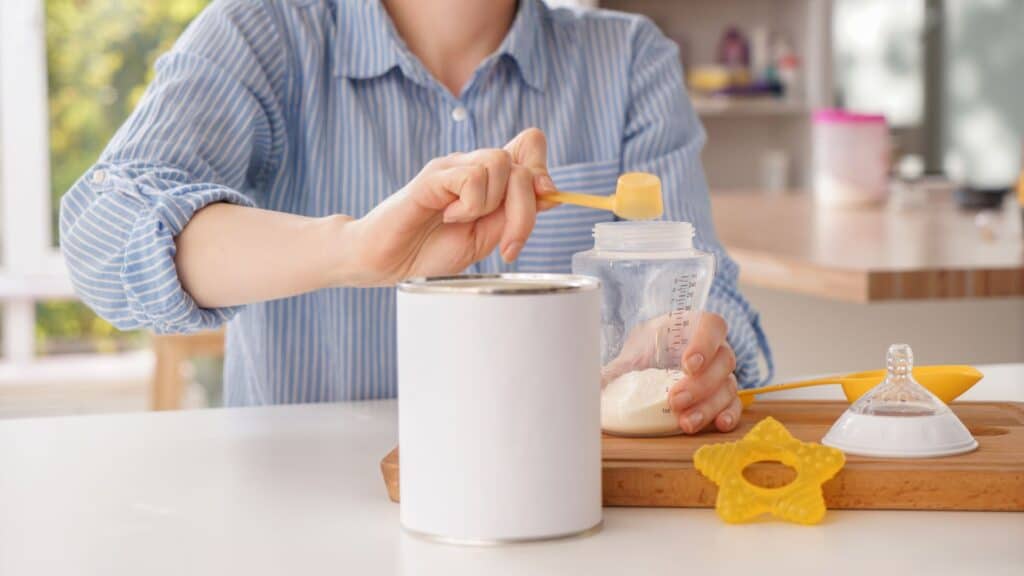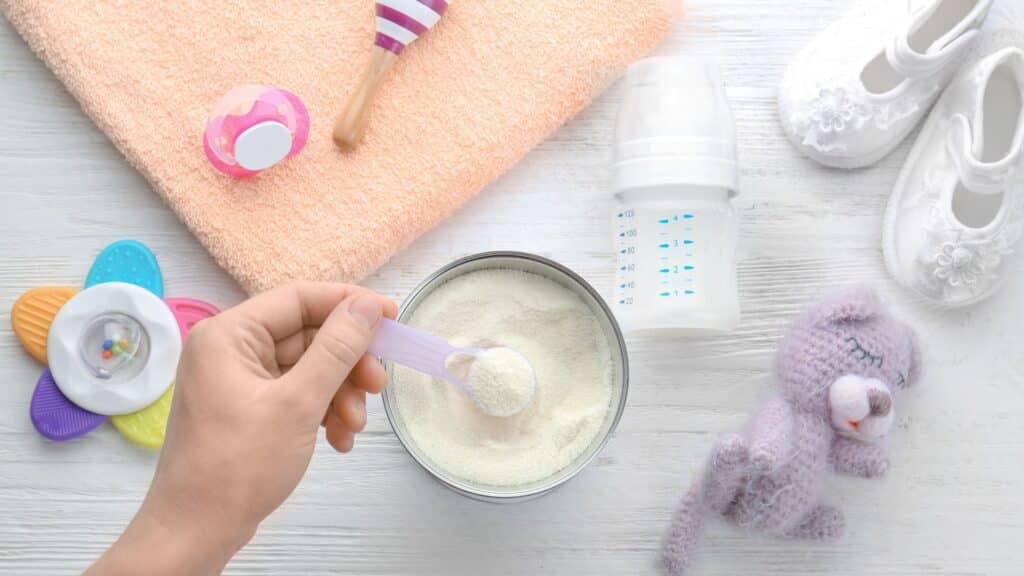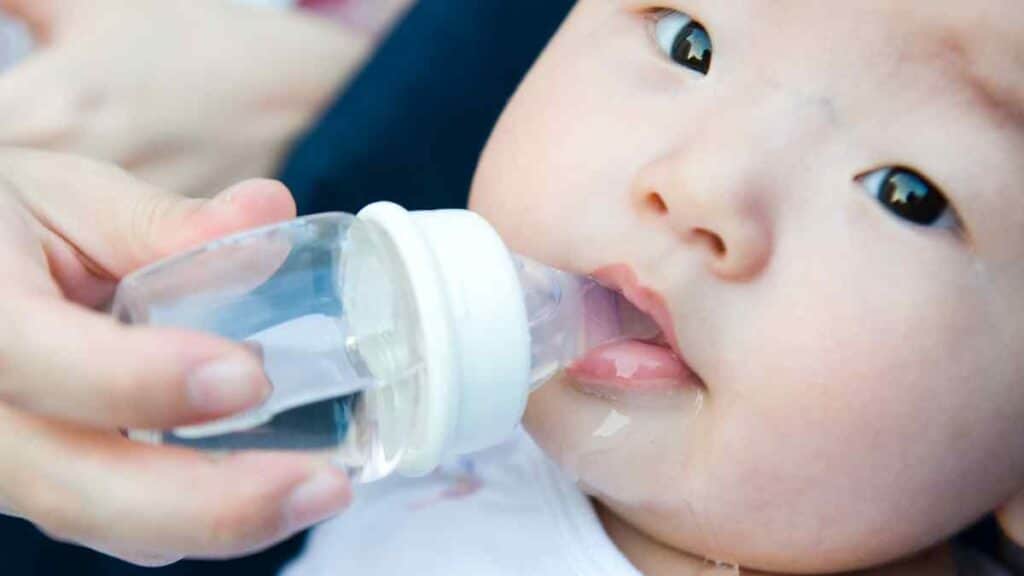Parenthood ushers in a world filled with countless questions, countless responsibilities, and an immense desire to provide the best for your child. Foremost among these concerns is their nutrition, primarily if they rely on formula feeding. Fret not, as you navigate this new venture, because we have compiled a comprehensive guide on ‘Mixing Baby Formula Perfectly’. This step-by-step guide is meticulously designed to make your journey much smoother, guaranteeing that every form-feed is correctly mixed and nutritionally balanced for your baby’s wellbeing.
In this blog, we shed light on the importance of accurately preparing infant formula, utilizing both powdered and liquid concentrate formula types. We delve into the ramifications of incorrect preparation and, subsequently, demystify the vast world that is baby formulas – each with their unique pros and cons. Armed with this knowledge, you will be empowered to choose an appropriate formula that best meets your baby’s dietary needs and restrictions. We further assist in taking the guesswork out of mixing baby formulas, presenting an all-inclusive checklist for new parents and a detailed guide on how to mix baby formula of various types flawlessly.

Why Properly Mixing Baby Formula Matters
The correct preparation of infant formula, whether it’s powdered formula or liquid concentrate formula, plays a vital role in your baby’s well-being. Formula feeding, when done accurately, ensures that your little one gets the essential nutrients required for robust growth and development.
Here is the importance of adequately mixing baby formula and the potential consequences of not doing so.
Nutritional Balance:
Baby formula is designed to mimic the nutritional composition of breast milk, providing essential vitamins, minerals, and macronutrients such as proteins, fats, and carbohydrates. Mixing the formula according to the manufacturer’s instructions is vital to maintaining this balance. Inaccurate mixing can lead to an over-concentrated or diluted formula, negatively impacting a baby’s health.
Digestive Issues:
The incorrectly mixed formula can cause digestive problems for your baby. The over-concentrated formula may be too difficult for their immature digestive system to break down, resulting in gas, bloating, and discomfort. On the other hand, a diluted formula can lead to insufficient nutrient intake, causing malnutrition and other related issues.
Dehydration:
An over-concentrated formula can lead to dehydration, as it may need need to provide more water content to keep the baby properly hydrated. Dehydration in infants can be dangerous, leading to various complications such as electrolyte imbalances and kidney problems.
Weight Gain or Loss:
Inaccurate mixing can result in either excessive weight gain or unhealthy weight loss. An over-concentrated formula is high in calories, which can cause rapid weight gain and increase the risk of obesity in the future. Conversely, a diluted formula does not supply the necessary calories for growth and development, leading to weight loss and failure to thrive.
Allergic Reactions:
Some babies have allergies or sensitivities to certain ingredients in baby formula. Mixing the formula incorrectly can exacerbate these allergies, causing symptoms such as rash, gastrointestinal issues, or even anaphylactic reactions.

Understanding the Different Types of Baby Formula
Preparing formula for your baby can be a daunting task for new parents, especially with the numerous types available in the market.
Here are the various types of baby formula you can prepare for your baby, along with their pros and cons.
Cow’s Milk-Based Formula
Pros:
- Most commonly available and widely accepted option
- Nutritionally balanced and closely resembles breast milk
- Suitable for most babies without any allergies or sensitivities
Cons:
- Not suitable for babies with lactose intolerance or cow’s milk allergy
- It may cause gas, bloating, or constipation in some infants
Soy-Based Formula
Pros:
- A good alternative for babies with lactose intolerance or cow’s milk allergy
- Suitable for vegan families or those with dietary restrictions
- It may be easier to digest for some infants
Cons:
- Lower in calcium and other nutrients compared to cow’s milk-based formulas
- Not recommended for babies with a soy allergy or sensitivity
- Some studies suggest potential hormonal effects due to the presence of phytoestrogens in soy
Hydrolyzed Protein Formula
Pros:
- Designed for babies with allergies or sensitivities to both cow’s milk and soy
- Protein is broken down into smaller, more easily digestible particles
- It may help prevent or alleviate allergic reactions and gastrointestinal issues
Cons:
- More expensive than other types of formulas
- It may have a strong or bitter taste, which might affect a baby’s acceptance
Lactose-Free Formula
Pros:
- Suitable for babies with lactose intolerance or galactosemia
- Provides all essential nutrients without lactose
Cons:
- Not suitable for babies with a cow’s milk allergy or sensitivity
- It can be more expensive than regular cow’s milk-based formulas.
Specialty Formula
Pros:
- Tailored to address specific nutritional needs or medical conditions, such as prematurity, reflux, or metabolic disorders
- Can provide essential nutrients for babies who require additional support
Cons:
- It can be significantly more expensive than other types of formulas
- It may require a prescription or consultation with a healthcare provider
To prepare formula that is best for your baby, consult with a pediatrician or healthcare provider before switching, as they can provide personalized guidance and recommendations.

Preparing to Mix Baby Formula: A Checklist for New Parents
New parents often find themselves overwhelmed with caring for a newborn. One of the essential tasks is mixing baby formula, which is crucial for the health and growth of your little one.
To help you in this process, we have compiled a comprehensive checklist to ensure you have everything you need before mixing baby formula.
Baby formula: Choose a formula that meets your baby’s nutritional needs and dietary restrictions.
Clean and sterilized bottles, nipples, and caps: Ensure that all feeding equipment is thoroughly cleaned and sterilized before use.
Bottlebrush: Have a dedicated bottle brush to clean the insides of bottles effectively.
Measuring scoop: Use the scoop provided with the formula to measure the correct amount of powder.
Fresh, cool water: Use filtered, tap, or bottled water as recommended by your pediatrician.
Formula dispenser or storage container (optional): Consider using a formula dispenser or storage container for the pre-measured formula for on-the-go feeding.
Bottle warmer or a container with warm water (optional): If you prefer to serve the formula warm, invest in a bottle warmer or use a container with warm water to heat the bottle gently.
By having all the necessary items on hand, you’ll be better equipped to provide your baby with the proper nutrition they need to grow and thrive.

Step-by-Step Guide: How to Mix Baby Formula Perfectly
Here is a step-by-step guide to help you mix baby formula perfectly:
- Wash your hands thoroughly with soap and water.
- Prepare the bottle, nipple, and cap by sterilizing them according to the manufacturer’s instructions or boiling them for 5 minutes.
- Follow the instructions on the formula package for the correct water-to-powder ratio, usually one scoop of formula per 2 ounces of water.
- Pour the required amount of water into the bottle.
- Add the measured formula powder using the scoop provided. Level off the scoop and avoid packing the powder.
- Seal the bottle with the nipple and cap, and shake well until the formula is thoroughly mixed and free of clumps.
- Test the temperature by sprinkling a few drops of the formula on your wrist. It should be lukewarm, not hot.
- Feed your baby immediately or store the prepared formula according to the guidelines in the ‘Tips for Storing and Reheating Baby Formula’ section.
By following these simple steps, you can ensure your baby gets a perfectly mixed formula every time. Always consult your pediatrician if you have concerns or questions about feeding your baby.
Tips for Storing and Reheating Baby Formula
Baby formula is a convenient option for many families, but it’s essential to know how to store and reheat it correctly to avoid health risks. This guide will provide the best practices to keep your baby safe and healthy.
Storing Baby Formula
- Unopened formula: Store unopened cans of baby formula in a cool, dry place away from direct sunlight. Check the expiration date before using it, and never use the expired formula.
- Opened formula: Once opened, the powder formula should be stored in an airtight container with a secure lid. Please keep it in a cool, dry place and use it within 30 days.
- Prepared formula: Store baby formula in the refrigerator for up to 24 hours. Avoid keeping it in the refrigerator door, as the temperature may fluctuate. Always label the bottle with the date and time it was prepared to ensure freshness.
Reheating Baby Formula
- Warming methods: The best way to warm baby formula is by using a bottle warmer or placing the bottle in a bowl of warm water. Avoid using a microwave, as it can create hot spots in the formula, burning your baby’s mouth.
- Testing the temperature: Prior to feeding your infant, verify the formula’s temperature by agitating the bottle and applying a few drops on your wrist. Utilizing hot water should result in a lukewarm sensation, not a scalding one
- Discarding leftover formula: Do not reuse excess formula that has been in contact with your baby’s saliva. Bacteria from their mouth can contaminate the formula; reheating it will not destroy the bacteria.
Tips for Safe Feeding
- Cleanliness: Prioritize washing your hands, the baby’s bottle, nipple, and any other feeding equipment before preparing the formula.
Mixing instructions: Adhere to the manufacturer’s guidelines when mixing the formula, as incorrect preparation can result in insufficient or excessive nutrient concentrations.
Feeding time: Offer the warm formula to your baby when they exhibit hunger cues, such as sucking on their hands or turning their head towards a nipple or bottle. Refrain from overfeeding or compelling your baby to finish a bottle if they display signs of fullness at their baby’s mouth.
Following these best practices for storing and reheating baby formula can ensure your baby’s safety and well-being. Always pay attention to your baby’s cues and consult your pediatrician if you have any concerns or questions about feeding your baby.

Common Mistakes to Avoid When Mixing Baby Formula
Here are some common mistakes parents make when mixing baby formula and how to avoid them:
- Not following the manufacturer’s instructions for water-to-powder ratio.
- Using hot tap water, which may contain impurities or lead.
- Shaking the bottle too vigorously creates excessive air bubbles.
- Not leveling off the measuring scoop leads to incorrect amounts of formula.
- The heating formula in a microwave causes uneven heating and potential burns.
By being aware of these common mistakes and taking the necessary steps to avoid them, you can ensure your baby gets the nutrients they need safely and healthily. Always consult your pediatrician for concerns or questions about your baby’s feeding and nutrition.
Troubleshooting: What to Do When Baby Formula Disagrees with Your Baby
Feeding your baby with formula is supposed to give them the necessary nutrients to grow and develop. However, sometimes baby formula might not agree with your little one, causing them discomfort or other issues. In such cases, parents must know the possible steps to ensure their baby’s well-being.
- Consult your pediatrician about switching to a different formula.
- Consider trying a smaller feeding amount, more frequent feedings, or slower-flow nipples.
- Rule out any allergies or sensitivities to specific ingredients.
- Monitor your baby’s reactions and discuss them with your pediatrician.
If your baby’s formula is causing them discomfort or other issues, it’s crucial to identify the symptoms, consult your pediatrician, and consider alternative formulas or feeding methods. Following these steps and maintaining open communication with your doctor can help ensure your baby’s comfort and well-being.

Conclusion
In conclusion, properly mixing baby formula is crucial for the health and well-being of your baby. It ensures that your baby receives the nutrients necessary for healthy growth and development.
Not mixing formula accurately can cause digestive issues, dehydration, weight gain or loss, allergic reactions, and other health problems.
Understanding the different types of baby formula available and their pros and cons can help you make an informed decision that best suits your baby’s needs.
We hope this article was helpful! If you have a question, please let us know in the comments.



